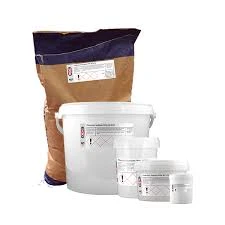
chemicals used in water treatment
Chemicals Used in Water Treatment Ensuring Safe and Clean Water
Water is an essential resource for life on Earth, playing a vital role in various ecosystems and human activities. However, the water we consume is often contaminated with various impurities, including pathogens, chemicals, and organic material. To ensure that drinking water is safe and suitable for consumption, various chemicals are employed in the water treatment process. Understanding these chemicals and their roles not only informs us about the importance of water treatment but also emphasizes the need for responsible chemical use.
The treatment of water generally involves several stages, including coagulation, sedimentation, filtration, and disinfection. Each stage utilizes specific chemicals to achieve the desired quality of potable water.
Coagulation and Flocculation
The first stage, coagulation, involves adding chemicals to water to promote the clumping together of particles, known as coagulation. Common coagulants include aluminum sulfate (alum) and ferric chloride. These chemicals help neutralize the charges on suspended particles, allowing them to aggregate into larger clusters or flocs. Flocculation follows, where gentle stirring helps to form larger flocs from the initial smaller ones, which can then be removed from the water in subsequent stages.
Sedimentation
After flocculation, the mixture undergoes sedimentation, where the larger, denser flocs settle to the bottom of the treatment tank. This separation reduces the concentration of suspended solids in the water, making subsequent filtration more efficient. Once sedimentation is complete, the clear water, known as supernatant, is siphoned off for further treatment.
Filtration
chemicals used in water treatment

Filtration is a critical stage in the water treatment process, where remaining impurities and fine particles are filtered out. Various filtration media, such as sand, gravel, and activated carbon, are used. In some methods, chemicals like potassium permanganate can be added to enhance the filtration process by oxidizing organic contaminants and aiding in the removal of color and odor.
Disinfection
Disinfection is the final and most crucial stage in water treatment, aimed at eliminating harmful microorganisms that can cause diseases. The most commonly used disinfectants include chlorine, chloramine, and ozone. Chlorine is widely utilized due to its effectiveness in killing bacteria and viruses, as well as its residual properties, which protect the water supply during distribution. However, chlorine can react with organic matter, forming potentially harmful byproducts, prompting some water treatment facilities to explore alternative disinfectants such as ultraviolet (UV) light and ozone, which do not produce these byproducts.
pH Adjustment and Corrosion Control
In addition to the above processes, adjusting the pH of water is essential for maintaining its stability and safety. Chemicals such as sodium hydroxide or sulfuric acid may be used for this purpose. Proper pH levels not only enhance the effectiveness of disinfection but also prevent corrosion in pipes, thereby reducing the leaching of harmful metals like lead and copper into the water supply.
Conclusion
The use of chemicals in water treatment is vital for ensuring that our drinking water is safe, clean, and free from contaminants. By understanding the specific roles of chemicals such as coagulants, disinfectants, and pH adjusters, we can appreciate the complexity and necessity of the water treatment process. It is paramount that water treatment facilities use these chemicals responsibly to balance effectiveness with safety, thus protecting both public health and the environment. As our understanding of water quality continues to evolve, ongoing research and innovation in water treatment technologies will be essential to continue providing safe drinking water for future generations.
-
Pure Sodium Dichloroisocyanurate Dihydrate | Powerful DisinfectantNewsAug.29,2025
-
Industrial Chemicals: Quality & Purity for Every IndustryNewsAug.28,2025
-
Nitrile Rubber Honoring Strict Production StandardsNewsAug.22,2025
-
Aspartame Ingredients Honoring Food Safety ValuesNewsAug.22,2025
-
Fertilizer for Balanced Plant NutritionNewsAug.22,2025
-
Cyanide Gold Processing with High Purity AdditivesNewsAug.22,2025
-
Formic Acid in Textile Dyeing ApplicationsNewsAug.22,2025
Hebei Tenger Chemical Technology Co., Ltd. focuses on the chemical industry and is committed to the export service of chemical raw materials.
-

view more DiethanolisopropanolamineIn the ever-growing field of chemical solutions, diethanolisopropanolamine (DEIPA) stands out as a versatile and important compound. Due to its unique chemical structure and properties, DEIPA is of interest to various industries including construction, personal care, and agriculture. -

view more TriisopropanolamineTriisopropanolamine (TIPA) alkanol amine substance, is a kind of alcohol amine compound with amino and alcohol hydroxyl, and because of its molecules contains both amino and hydroxyl. -

view more Tetramethyl Thiuram DisulfideTetramethyl thiuram disulfide, also known as TMTD, is a white to light-yellow powder with a distinct sulfur-like odor. It is soluble in organic solvents such as benzene, acetone, and ethyl acetate, making it highly versatile for use in different formulations. TMTD is known for its excellent vulcanization acceleration properties, which makes it a key ingredient in the production of rubber products. Additionally, it acts as an effective fungicide and bactericide, making it valuable in agricultural applications. Its high purity and stability ensure consistent performance, making it a preferred choice for manufacturers across various industries.





